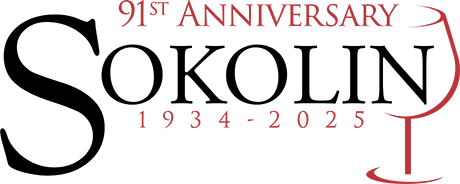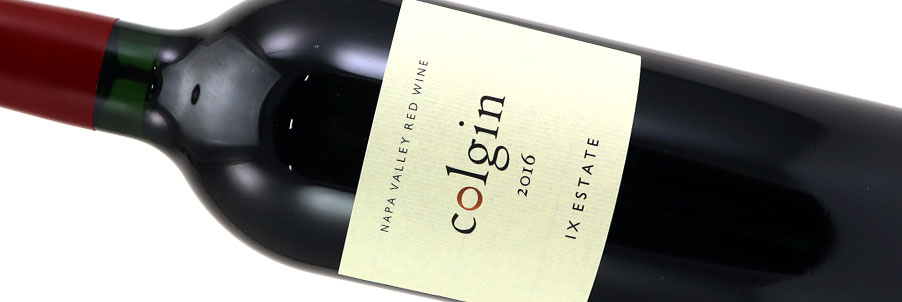Tasting like the concentrated blood from an aged and grilled strip steak, the 2010 Ermitage Le Pavillon boasts a black/purple color along with creme de cassis, camphor, pen ink, white flower and lead pencil shaving characteristics in its massive, full-bodied personality. It almost defies description because of its ethereal concentration and off-the-charts extract levels. This is not for the faint of heart, or those who lack patience, as it will require 10-15 years of bottle age, and, as previously stated, will keep for 50 or more. There are just over 1,000 cases of the 2010 Le Pavillon, another perfect wine in the constellation of profound wines produced by Michel Chapoutier.In November of this year, Michel Chapoutier finally made the cover of The Wine Spectator. The accompanying article said essentially the same things I had written about over twenty years ago. More importantly, I am thrilled that Chapoutier received this attention because it has long been deserved. History will record that Michel Chapoutier is a revolutionary. He is also a highly emotional man whose infectious love of primitive art, historic books, classical music and, of course, terroir and winemaking are seemingly impossible to harness. Michel Chapoutier was among the first in France to embrace the radical biodynamic agricultural teachings, for which he was initially criticized, but is now praised. He was also the first to print all his labels in Braille, something that cynics considered to be a gimmick, but ask the National Association for the Blind what they think. Coming from a famous family, but moving in a direction unlike any of its previous members, Michel Chapoutier is self-taught. What he has accomplished over the last two decades or more is one of the great wine stories of the modern era. With all his outgoing, boisterous, machine-gun-speed prose that can sometimes sound shockingly cocky, and at other times reminiscent of the famous Lebanese poet Khalil Gibran, there is never a dull moment around Chapoutier., who makes comments such as “Filtering wine is like making love with a condom,” and “Acidifying wine is like putting a suit of armor on the vineyard’s terroir, vintage character and the cepage.” Don’t blame him if his brilliant intellect and shocking vocabulary put his visitors on the defensive. Michel Chapoutier has proven through his genius, the faith of his convictions and backbreaking attention to detail in his vineyards and in the winery that a once moribund negociant (yet with significant vineyard holdings) could become a beacon of inspiration and quality for the entire world. In short, every wine consumer in the world should admire his accomplishments. All of Chapoutier’s lower level 2010 whites and basic reds have long been sold out, so to keep the tasting somewhat limited during my visit, we focused on the more recently released 2010 white and red selections parcellaires and nearly all the 2011s. As for the 2010 selection parcellaire whites, they are spectacular. Le Pavillon, once called Rochefine and owned by Jaboulet-Verchere, consists of 10 acres of pure granite in the famed Les Bessards, which is considered by many to be the single greatest terroir of Hermitage. The Ermitage Le Pavillon, which is meant to age for 50+ years, is Michel Chapoutier’s legacy, and he is confident that history will support his belief in this extraordinary wine. Michel Chapoutier is not alone in believing the 2011s may resemble a more modern day version of 1991. That vintage was largely underrated by just about everybody (except yours truly) because all the accolades and hyperbole were largely bestowed on both 1989 and 1990 (deservedly), but in the Northern Rhone 1991 turned out to be a strikingly superb vintage for Cote Rotie, Hermitage, Cornas and Condrieu. In the Southern Rhone, the vintage was largely a disaster. Following is an overview of what to expect with the inexpensive 2011 whites and reds. Most of these wines do not have the weight, power or tannic structure of the 2010s, but they are by no means diluted or wimpish wines. They tend to be charming, fruit-forward and seductive, and thus may be preferred by consumers looking for immediate gratification. Although the first few wines reviewed are Southern Rhones, they need to be covered because they are in bottle, and I did not review them in issue 203. Along with several other producers, Michel Chapoutier has helped increase the world’s attention to the long-forgotten, microscopic appellation of St.-Peray. Chapoutier produces a bevy of St.-Perays under his own name as well as in partnership with two three-star chefs, Sophie Pic, of the Restaurant Pic in Valence (as well as several culinary branches in Paris and Lausanne, Switzerland), and Yannick Alleno, the brilliant chef at the Hotel Le Meurice’s in Paris. The red 2011 selections parcellaires are already fruit-forward and seductive. Readers should love them as they are much more evolved than the more structured, powerful, dense, tannic 2010s.Robert Parker | 100 RP(M Chapoutier, Le Pavillon, Hermitage, Rhône, France, Red) Sometimes the setting in which you taste a wine helps to fix it in your mind. I tasted this at the Chapel of Saint Christopher on the hill of Hermitage, looking down over the vineyards - a magical spot at the best of times. I was expecting this to be quite closed and introspective, but it’s already unfurling, and beginning its first drinking window, quite mature in colour, open and ready for business. It has a beautifully aromatic nose, complex notes of plum, blackberry, glove leather, black olive tapenade and a little hedgerow. Very fresh and alive. Great impact and concentration on the palate, remarkably saline, very intense, but so lively and vivid. Texturally it’s velvety, saline, bright and pixelated. Long finish. A hugely complex and dynamic wine, the spirit of Hermitage. (Drink between 2020-2034)Decanter | 99 DECDensely packed, with zesty loganberry, blueberry coulis, plum skin and blackberry paste flavors, presenting a hefty backdrop of ganache and graphite that takes over on the very long finish. A lovely alder note echoes in the background. Best from 2018 through 2028. 43 cases imported. — JMWine Spectator | 97 WSInky purple. Heady, exotically perfumed aromas of ripe dark berries, candied flowers, Indian spices and cracked pepper. Stains the palate with intense blackberry and boysenberry flavors, picking up a sweet violet pastille note with aeration. Dense but lively and strikingly precise given its concentration. Shows superb finishing energy and focus, closing with amazing length and slow-building, harmonious tannins. This wine is built for the long haul; I wouldn’t touch it for at least another decade.Vinous Media | 96 VM

